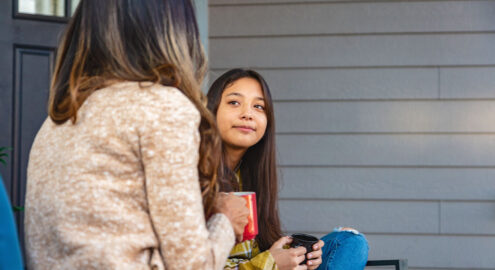What Is It?
When we “bridge differences” in schools, we are working toward fostering positive intergroup relationships, whether those bridges are between students, teachers, school leaders, parents/caregivers, or people in our communities.
Differences don’t necessarily need to divide people, but we do have a tendency, rooted in evolution, to split the world into “us” and “them”—and to treat members of our own “ingroup” with kindness while behaving badly toward outside groups. These tendencies can be especially pronounced at times when we feel stressed or threatened, anxious about our own security or survival.
Through mental shortcuts known as “heuristics,” we often make snap judgments about other people—which can turn negative in certain circumstances. For instance, opinions about immigrants might be formed by negative stories on cable news, which tap into the “availability heuristic,” wherein we make our judgments based on immediately accessible or repetitious information, e.g., “immigrants will overthrow everything we love about America.” People who aren’t exposed to other information will start to form stereotypes about immigrant groups, which in some cases can be used to rationalize exploitation or discrimination. These kinds of psychological processes make it easier for us to demonize outgroups and engage in chauvinistic behavior, helping create the divides we live in today.
Why does social and political polarization seem to be getting worse in American society?
This is a topic of fierce debate among political scientists and sociologists. We know that rapid demographic changes are introducing much more diversity to our neighborhoods, workplaces, government, and culture. This is leading to more anxiety among formerly dominant demographic groups, which elicits the kinds of psychological judgments and biases described above. When those biases go unchecked, feelings of anxiety can lead to antagonism and prejudice. These divisions are now driving decisions about where Americans live, whom we befriend, and how we’re educating our children—serving to divide us further.
But Americans want to live in a country where our political differences don’t have to push us apart. A recent NBC News/Wall Street Journal survey found one topic of agreement between Americans of different parties polled: 80 percent of respondents agreed that the country is “divided,” while 90 percent of those surveyed believed that the divisions between Democrats and Republicans are a “serious problem.”
By understanding the social and psychological roots of polarization, we can promote solutions that help bring people together by sharing commonalities, not just differences.
Why Does It Matter?
Recent research suggests that partisan divides in the United States and elsewhere are on the rise. The resulting polarization has widespread effects: It can harm our personal relationships, impact the education of youth, spark violence motivated by racial or religious prejudice, and even undermine our democracy.
Indeed, a RAND Corporation 2022 report surveyed 359 American district and charter network leaders; researchers found that political polarization around issues of vaccines (74%), COVID-19 misinformation (68%), and critical race theory (43%) was “interfering with their ability to educate students.”
There is an urgent need to reverse these trends, for the good of society and the health of democracy. In our diverse—and increasingly polarized—world, it is vital that youth develop the capacities to understand and care for those who are different from them and learn to transcend their differences and disagreements to work together toward superordinate goals. In other words, our youth must become “Bridge Builders.”
There is a growing movement of individuals and organizations—Bridge Builders—who are working to foster more constructive dialogue and understanding across group lines, bringing us together at a time when so many forces are pulling us apart.
Bridge Builders close the psychological gaps between Us and Them, encouraging others—and themselves—to recognize that their differences don’t need to define or divide them and that they can disagree with someone without dehumanizing them; instead, they work to promote empathy and understanding, find common ground when possible, and identify shared goals and values.
Through this collection of practices, students will have the opportunity to begin to understand and build key capacities they need to bridge differences, understand and pursue justice, and contribute to a vibrant, inclusive democracy.
Practices

Take-Home Skill: Navigating Emotions

Take-Home Skill: Create Trust with Respectful Communication Agreements

Listening and Questioning to Build Community

Just Because (Broaden Your Sense of What’s Comfortable and Familiar)

Navigating Challenging Emotions During Difficult Conversations

People Can Change: Recognizing Our Potential for Growth

Facilitating Bridging Discussions

Take-Home Skill: Unpacking Identity for Teens

Who Am I?

Listening with Compassion

Take-Home Skill: Talk with Teens about Equity and Justice

Building Collaborative Classroom Norms
- 1
- 2

Are you ready to build a kinder, happier school where everyone belongs? Join Greater Good Educators! Explore the science of well-being in a supportive community of educators from around the world. Registration is now open for the 2025-2026 school year!





